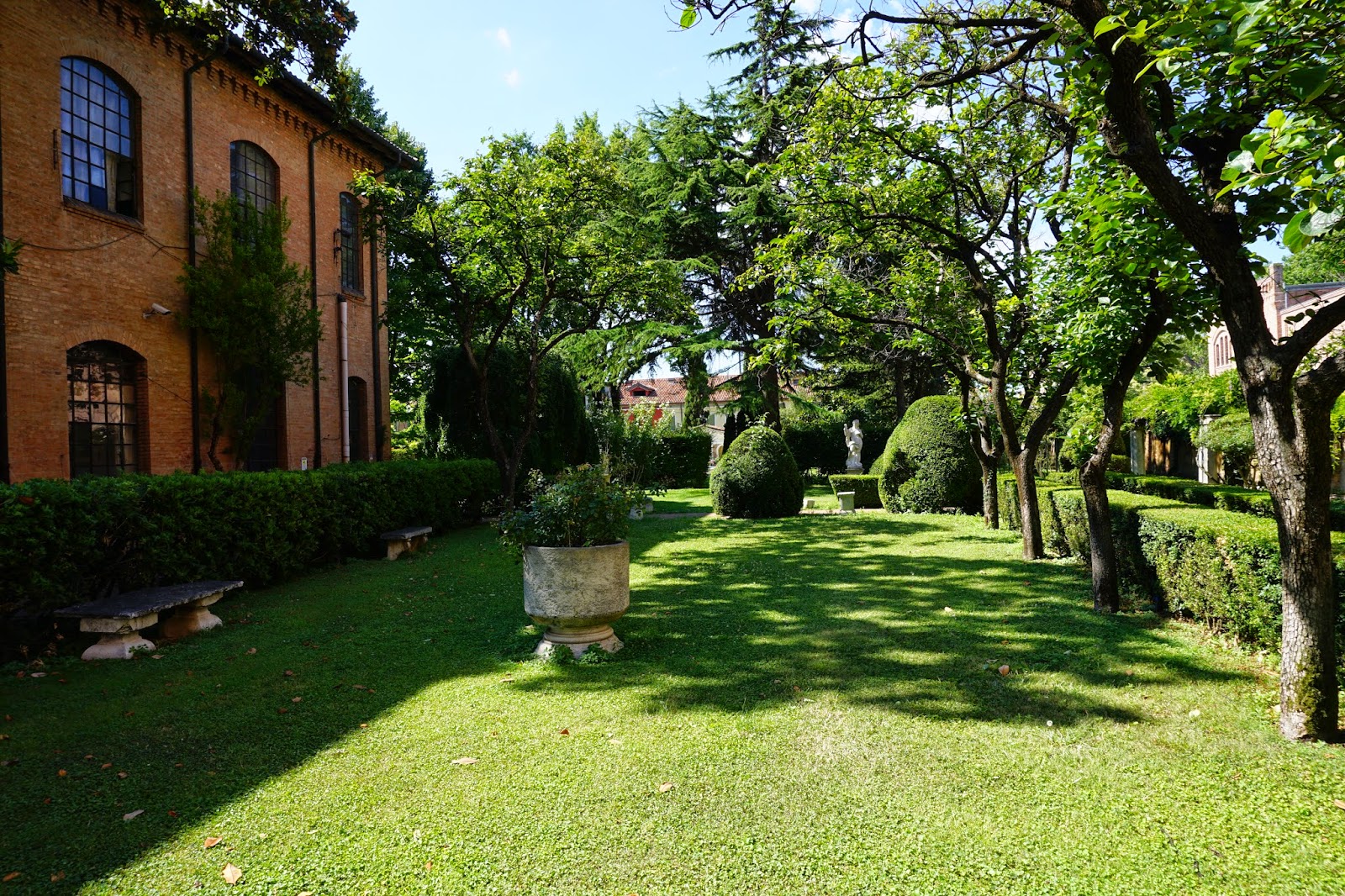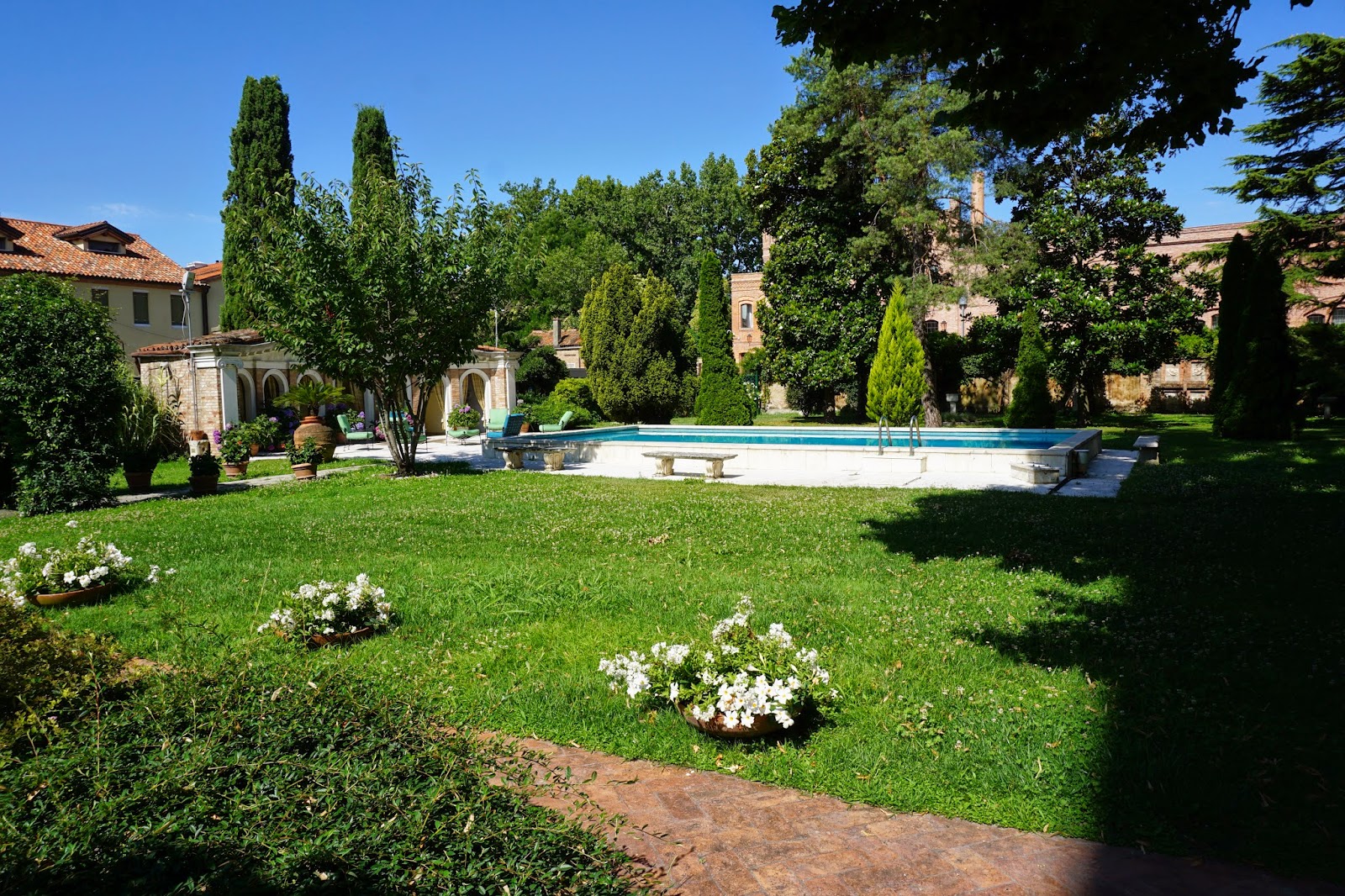 |
| Claude Montet in his garden, 1921 |
 |
| I think my version of heaven looks a lot like this! |
I am following Nature without being able to grasp her.
I
perhaps owe having become a painter to flowers.
 |
In the Garden, 1895,
Collection E. G. Buehrle, Zürich |
I think without my love of art, I perhaps would not have become a gardener or floral designer in my third life career; following that of a mother and art curator. This summer on my first family trip to Europe, I got to finally visit "the" garden that was the source of inspiration for many of the paintings of the great Impressionist painter Claude Monet. Monet's garden and lily pond at his country house in Giverny, France, has been a continuous source of inspiration to creativity, art research and gardening throughout my life.

Visiting Monet's vibrant gardens and lily pond at Giverny, has been a dreamy personal goal and on my bucket list, since I was a young art history student who could never afford such travel. Experiencing this fantasia of flowers for the first time in June--when blossoms were exploding with color--was simply, wondrous. The garden's vast variety of flowers seemed as etheral in their vitality as the ones that Monet immortalized in his Impressionist paintings.
Located half way between, Rouen and Paris, is the small country town Giverny, where Claude Monet spent 43 years cultivating and composing
this magnificent garden and lily pond that was the subject of the beauty, poetry and prose of his many painting that now hang has in the finest museums
of the world.
I ‘m extremely busy with my garden; it’s such a joy to me
and…I am in raptures at the wonders of nature.

It is well documented that Monet had a deep love and connection to his garden and sought inspiration from its beauty. Monet first rented his pink stucco one-room wide country home in 1883; and finally purchasing it in 1890 with the considerable success of the sales from his paintings of the 1870s that were the hallmark of the revolutionary art movement, known as Impressionism.
The Impressionist artists moved away from realism to a style that tried to capture fleeting and momentary light through short brush strokes side by side. Over the years, Monet transformed his simple country garden typical for the Normand region--with a kitchen garden and an orchard of apple trees-- into a garden with wild vitality like that of his impressionist brushstrokes in one of his landscape paintings. He also added a lily pond that reflected the interest and fashion of Japanese prints that influence many artists of the time. This addition seems to balance the vitality and vibrancy of his more traditional flower garden with the pond's viscus, quite and more contemplative space that is reflective of a deeper more mysterious quality evident in many of Monet's late paintings.



From a gardeners perspective, it just doesn't get much better. In fact, I think this is what my version of heaven may look like; as it is an explosion of color with wild energizing abundance that is simply joyful. Monet was a master gardener carefully composing his garden over many years to reflect the spontenaiety and naturalness just, as he depicted in his plein air paintings-- that we know were carefully planned and usually sketched in nature only to finish the painting in the studio. Every color and variety of flower was composed for contrast and pop like brushstrokes in his paintings. In his garden planning, exploration was encourage by the soft gravel paths and flower arches throughout his garden. I enjoyed too the exotic beauty of his lily pond, but the untamed vitality, abundance of color and variety of his flower garden filled my heart. I think Monet and I are kindered garden spirits as we share the unbridled love of color, wild vitality, and joyful abundance in our garden aesthetics.


After our visit to Monet's country house, garden and lily pond, we toured the small town of Giverny. We ended our visit in the old church yard where Monet was laid to rest. Monet left his country home and garden to his son Michael, who gave it to the French Academy of Arts in 1966, and after 10 years of restoration, it opened to the public in 1980. Giverny was a place of inspiration and solace for Monet, and each season, his garden continues to serve as a vibrant bouquet that continues to inspire and provide joy. It is no wonder why it is one of the most celebrated gardens in the history of art and gardening.
 A Valentine's Day bouquet should be as thoughtful as the card you
select and unique as the sentiment your write in it. Commercial bouquets for Valentine’s Day
typically are the standard cellophane wrapped uniform dozen or two of fragrant less roses grouped with
baby’s breath and simple greens that make one resent buying such a lack luster
bouquet to celebrate the romance of the day. Did you know many of these commercial grab and
go super market bouquets or the arrangements offered on the 1-800 wire services
have been cut more than a week before, boxed out of water and shipped across
continents, then trucked to a local commercial venues to be purchased by some
love struck suitor who is simply trying to execute the traditional expected
romantic gesture of giving red roses to their beloved. While the gesture is
romantic, these standard holiday bouquets are definitely not, and are often lack luster, uniform, and even sometimes
a disappointment, when they fade only after a couple of days. A friend’s husband asked me simply, “What is
the difference between your bouquets and a Costco bouquet of roses besides quantity and price? “ The answer I gave him is that at Costco or the supermarket one generally purchases uniform roses as describe above and not a unique creative expression
conveyed through an artful aesthetic of sensory, unusual, fresh fragrant flowers that are locally grown. Commercial bouquets generally do not speak of
beauty, vitality, and most especially romance and love that beautiful fresh and locally
grown flowers convey in their variety.
A Valentine's Day bouquet should be as thoughtful as the card you
select and unique as the sentiment your write in it. Commercial bouquets for Valentine’s Day
typically are the standard cellophane wrapped uniform dozen or two of fragrant less roses grouped with
baby’s breath and simple greens that make one resent buying such a lack luster
bouquet to celebrate the romance of the day. Did you know many of these commercial grab and
go super market bouquets or the arrangements offered on the 1-800 wire services
have been cut more than a week before, boxed out of water and shipped across
continents, then trucked to a local commercial venues to be purchased by some
love struck suitor who is simply trying to execute the traditional expected
romantic gesture of giving red roses to their beloved. While the gesture is
romantic, these standard holiday bouquets are definitely not, and are often lack luster, uniform, and even sometimes
a disappointment, when they fade only after a couple of days. A friend’s husband asked me simply, “What is
the difference between your bouquets and a Costco bouquet of roses besides quantity and price? “ The answer I gave him is that at Costco or the supermarket one generally purchases uniform roses as describe above and not a unique creative expression
conveyed through an artful aesthetic of sensory, unusual, fresh fragrant flowers that are locally grown. Commercial bouquets generally do not speak of
beauty, vitality, and most especially romance and love that beautiful fresh and locally
grown flowers convey in their variety. A Valentine bouquet should be a sumptuous and sensory gesture
that conveys love and romance. A Valentine
bouquet should absolutely reflect the idea of romantic love--just as the lace
and papery Valentine cards do or velvety hear-shape boxes of candy do to
celebrate the sentiment. Giving locally grown seasonal flowers adorned in
rich, textures of bold sultry ribbons will be as unique and unforgettable
expression of your love. Valentine
flowers should be presented with an aesthetic of romance: fresh, fragrant, rich in color and texture
and artfully arranged with sumptuous satin ribbons and placed beautiful vessels
or wrapped in beautiful cellphones and papers. Most of my Valentine bouquets are inspire by
the vintage Valentine’s cards my parents presented to me as gifts over the years,
as the day of romance is also my
birthday. Inspired by these rich lacey and papery vintage cards, my Valentine’s bouquets try to emulate
these beautiful cards in their rich color and textures expressed in abundance and variety of seasonal flowers including:
tulips, anemones, ranunculus, lily of the valley, and even daffodils and
narcissus. I often include some greenhouse
roses which are grown sustainably because the rose will always be the quintessential icon of love, event though it is not abundant seasonal flower of Northern California. I do include
roses grown locally and sustainably in greenhouses and include bouquets
with flowers grown in my cottage garden and on organic local flower farms. Bouquets and Arrangements with unusual and
seasonal flowers that are fragrant and colorful and adorned with sumptuous ribbons
will convey romance and speak volumes to your beloved.
A Valentine bouquet should be a sumptuous and sensory gesture
that conveys love and romance. A Valentine
bouquet should absolutely reflect the idea of romantic love--just as the lace
and papery Valentine cards do or velvety hear-shape boxes of candy do to
celebrate the sentiment. Giving locally grown seasonal flowers adorned in
rich, textures of bold sultry ribbons will be as unique and unforgettable
expression of your love. Valentine
flowers should be presented with an aesthetic of romance: fresh, fragrant, rich in color and texture
and artfully arranged with sumptuous satin ribbons and placed beautiful vessels
or wrapped in beautiful cellphones and papers. Most of my Valentine bouquets are inspire by
the vintage Valentine’s cards my parents presented to me as gifts over the years,
as the day of romance is also my
birthday. Inspired by these rich lacey and papery vintage cards, my Valentine’s bouquets try to emulate
these beautiful cards in their rich color and textures expressed in abundance and variety of seasonal flowers including:
tulips, anemones, ranunculus, lily of the valley, and even daffodils and
narcissus. I often include some greenhouse
roses which are grown sustainably because the rose will always be the quintessential icon of love, event though it is not abundant seasonal flower of Northern California. I do include
roses grown locally and sustainably in greenhouses and include bouquets
with flowers grown in my cottage garden and on organic local flower farms. Bouquets and Arrangements with unusual and
seasonal flowers that are fragrant and colorful and adorned with sumptuous ribbons
will convey romance and speak volumes to your beloved.


























































